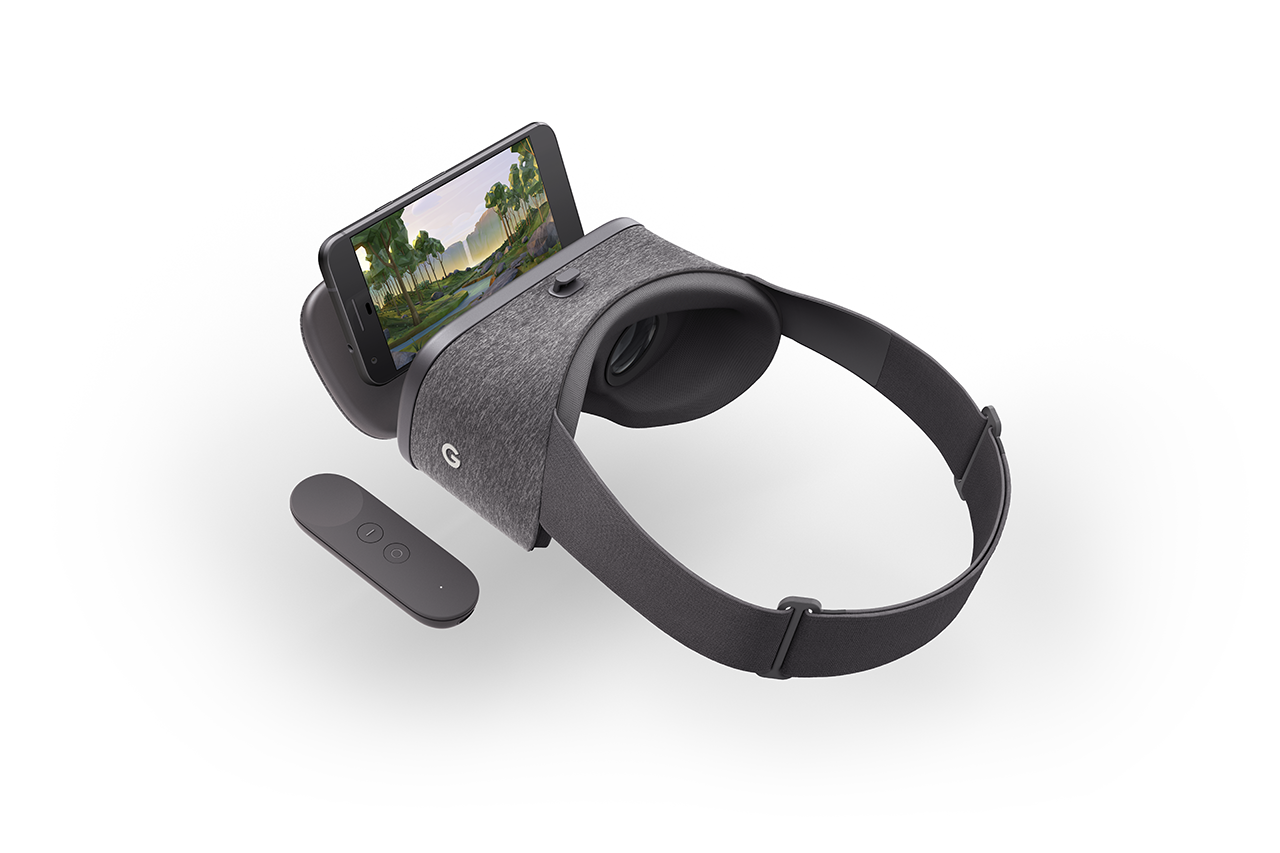This week’s Google keynote revealed new Pixel 4 smartphones and new Nest home assistants. But one piece of news went unspoken: Google quietly killed off another project. This time, it was Daydream VR, Google’s ambitious play to make virtual reality both affordable, and accessible, to the masses. The company will continue supporting the platform, but no longer manufacture it, or offer compatibility on the Pixel 4.
Daydream was announced in late 2016, hot off the heels of Google’s renewed push into hardware with its Google Home personal assistant and Pixel smartphones. It offered the perfect metaphor for people still ambivalent about experiencing virtual reality—a daydream!

Daydream seemed like not just a model for the future of casual VR but a model for Google to build its own products without leaving its friends making Android phones at LG, Samsung, or a number of other companies behind. The insanely talented development team even released all sorts of best practices for VR experience design, discovered in weekly design sprints as they prototyped apps people had simply never imagined before.
[Image: Google]
But when it ultimately launched, Daydream VR was just okay for all sorts of reasons, ranging from the ergonomics to imperfect design integration with Android itself. Its adoption is hard to track. Google has never shared sales figures or any other usage data for Daydream and declined to for this article. Then three years later, Facebook really would release the perfect, casual VR headset, the Oculus Quest. (Seriously! This thing is great! It almost makes Cambridge Analytica worth it, Facebook!) But even Oculus Quest wasn’t a monster success by modern measures. The last figures from June showed Facebook/Oculus sold 100,000 units. Even if that’s doubled or tripled by now, the Quest doesn’t touch the tens of millions of devices that would signal virtual reality’s moment has come.
Google declined to offer interviews for this story, and instead shared this official statement:
We saw a lot of potential in smartphone VR—being able to use the smartphone you carry with you everywhere to power an immersive on-the-go experience. But over time we noticed some clear limitations constraining smartphone VR from being a viable long-term solution. Most notably, asking people to put their phone in a headset and lose access to the apps they use throughout the day causes immense friction.
There also hasn’t been the broad consumer or developer adoption we had hoped, and we’ve seen decreasing usage over time of the Daydream View headset. While we are no longer selling Daydream View or supporting Daydream on Pixel 4, the Daydream app and store will remain available for existing users.
We’re investing heavily in helpful AR experiences like Google Lens, AR walking navigation in Maps, and AR in Search that use the smartphone camera to bridge the digital and physical worlds, helping people do more with what they see and learn about the world around them.
Google admits that the design was imperfect. Yes, it was still kind of a pain to go from putting your phone in the headset to actually playing something! The company also admits that it just didn’t get the pickup it had hoped from consumers. So Daydream flopped.
[Image: Google]
But the mention of augmented reality at the end of the statement is revealing. Google seems to be saying two things in this coda: Augmented reality will succeed where virtual reality failed. And augmented reality will be a hit on smartphones specifically, rather than stand-alone hardware. In other words, the future of VR isn’t headsets, it’s smartphones. (With some small exceptions, like the Google Glass Enterprise Edition 2 augmented reality glasses, which launched in May).
[Image: Google]
For decades, virtual reality looked like the inevitable future of computing. Now that decent, affordable VR headsets exist, it’s clear that many of us overestimated the impact of the technology. VR is not the next smartphone. That much is clear. Now, the entire tech industry seems to be nudging the conversation from VR to AR: “People don’t want VR headsets. They want AR headsets! Just wait until Apple releases one next year!”
[Image: Google]
By contrast, Google is saying the future of AR is actually on phones. Indeed, there’s some evidence for that argument. The most successful AR company on the planet, Snap, is soon releasing its third attempt on AR glasses—but all of its popular, ubiquitous face filters run right on the smartphone with its built-in camera.
Google hasn’t put Glass on ice, either. But it doesn’t seem too soon to ask: Is the vision of the VR or AR headset as a widespread consumer device just a dead branch hanging off technology’s evolutionary tree? Will AR instead simply be miniaturized and realized on phones as software features?
The shuttering of Daydream—paired with the fact that most people don’t seem to want VR headsets very much—could be the canary in the coal mine for technologists still so sure that they must be the next big thing. Maybe, just maybe, they won’t be.
Recognize your brand’s excellence by applying to this year’s Brands That Matter Awards before the early-rate deadline, May 3.